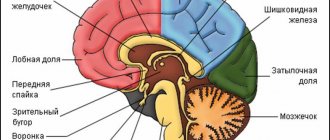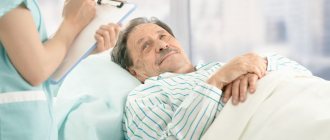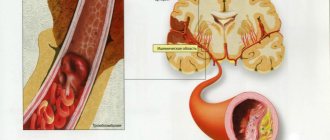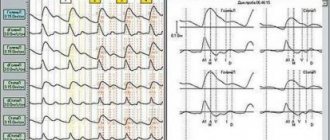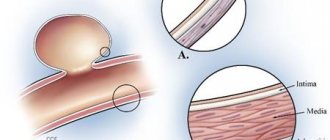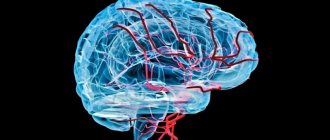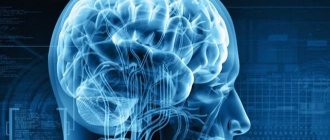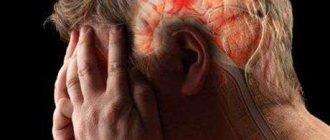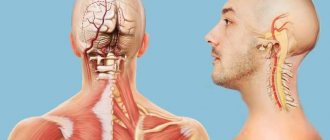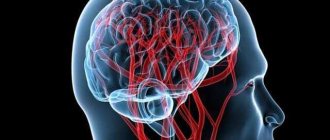How to prevent cerebral stroke: drugs and folk remedies, reviews
Cardiovascular pathologies occupy first place among diseases leading to disability or death. Every third patient is at risk of developing a stroke. There are recommendations and stroke prevention measures that experts have identified to reduce the risk of developing the disease.
What is a stroke
Stroke is a vascular disease that leads to persistent cerebrovascular accident. This condition causes focal lesions of brain cells, pathological changes in the central nervous system and blood vessels.
The pathology develops due to a negative effect on the blood vessels of the brain. As a result, blood flow in the vessels is disrupted and can lead to internal hemorrhage. Next, brain cells stop receiving nutrition and die. Depending on which part of the brain is affected, the patient may develop complete or partial paralysis, disturbance of the vestibular system, and speech.
According to statistics, 30% of patients die during an acute stroke, and 50% die within 12 months after the attack. Up to 20% of patients after a stroke become disabled and lose the ability to fully move. In case of complete or partial recovery, there is a risk of relapse.
Types of stroke
The disease has its own classification, which is determined by the degree of severity and mechanism of development. There is a different treatment for each type of stroke. It is important to carefully examine a patient who has suffered a stroke and identify the type of pathology.
The disease is divided into 2 categories:
- Ischemic stroke. It ranks first in prevalence among diseases of the cardiovascular system. It develops due to severe narrowing of blood vessels or their blockage by a blood clot. Pathology is possible due to drinking alcohol, smoking, or taking drugs. Disturbances in the functioning of the endocrine system and heart can also provoke cerebral ischemia.
- Hemorrhagic stroke. Occurs in 20% of attack victims. The disease is accompanied by severe consequences and a slow recovery period. An attack develops with the formation of a hematoma, which is formed due to hemorrhage into the substance of the brain. Hemorrhagic stroke can be triggered by hypertension, in which blood vessels undergo spasms and paralysis.
Doctors identify a third type of disease, which is not included in the official classification - mini-stroke. The pathology is characterized by a short-term stop of blood flow to the brain. The duration of the negative impact is no more than 2 minutes. The patient experiences most of the signs of a stroke, but does not attach importance to the symptoms, since health is quickly restored.
Who's at risk
Every third adult patient is at risk of having a stroke. Every patient who is susceptible to the disease must be registered at a local clinic.
Patients at risk for stroke include those who suffer from the following diseases:
- Hypertension. Pressure above 130/90 is dangerous for blood vessels. Long-term arterial hypertension can provoke rupture of cerebral vessels and cause ischemic stroke. Hypertension requires regular use of antihypertensive medications to maintain blood pressure within normal limits.
- Atrial fibrillation. The mechanism of development of the disease is the formation of a blood clot in the atria due to cardiac arrhythmias. There is a possibility of a blood clot breaking off and moving into the vessels of the brain. Next, an ischemic stroke develops.
- Diabetes. Patients with hormonal disorders are 3 times more likely to have a stroke. Pathology leads to fragility of the blood vessels of the whole body. With diabetes, there is a high risk of developing not only a stroke, but also a heart attack.
In addition to the listed pathologies, the risk group includes people with the following characteristics:
- Elderly age. After 50 years, a person’s hormone production fades, blood vessels become brittle, the walls suffer from constant spasms, and lose tone and elasticity. Low physical activity provokes the formation of blood clots and inhibition of proper blood circulation. Hypertension in old age can occur secretly, causing damage to the cardiovascular system.
- Genetic predisposition. If a brain catastrophe has occurred in close relatives, the patient needs to especially carefully monitor his health and follow measures to prevent cardiovascular problems. The development of a stroke in this group of people can be triggered by ordinary stress or alcohol intake.
- Prolonged stressful situations. The modern pace of life has led to the fact that strokes are increasingly occurring in young patients. Constant tension, sleep and eating disorders lead to the destruction of brain vessels. Patients exposed to regular stress are advised to engage in moderate physical activity to normalize cerebral circulation.
- Having high cholesterol levels in the blood. Excessive consumption of animal fats leads to the formation of cholesterol plaques on the walls of blood vessels. The blood flow becomes intermittent, provoking the development of thrombosis and brain catastrophe.
- Excess body weight. A patient's high weight is always accompanied by metabolic disorders, high cholesterol, and a high risk of blood clots.
- Drinking alcohol and smoking. Ethyl alcohol and tobacco products directly affect the condition of blood vessels. First of all, the pressure is disturbed, blood clots form, the blood is saturated with toxic substances and poisons the blood vessels. Smoking and drinking alcohol increases the risk of stroke by 4 times.
Timely prevention of the disease and regular examinations will reduce the risk of stroke to a minimum.
Symptoms and first signs of stroke
Every patient needs to know the symptoms of a stroke. Determining the catastrophic condition of a loved one will allow you to take the right measures and save a life.
The first signs of pathology appear in the following:
- pain in the head area;
- double vision, spots and dark spots appear;
- dizziness;
- nausea, vomiting;
- numbness of the limbs or individual parts of the body, limitation of motor activity.
There is a list of the first precursors of an attack:
- short-term memory loss;
- tinnitus (long-term or short-term);
- dizziness (at rest and when moving);
- pain in the head caused by changes in weather, fatigue.
If a person is suspected of having a stroke, it is necessary to conduct a mini-test that will detect an attack. You need to ask the person to fulfill the following requests:
- Smile. An incorrect, crooked smile is a sign of central nervous system disorders.
- Raise your hands up. During a stroke, the patient will not be able to lift one or both arms.
- Say your name. During an attack, the patient will unintelligibly pronounce his own name, confusing letters and swapping syllables.
If signs of a stroke are detected, you should immediately call an ambulance. If medical procedures are carried out within 2 hours, the patient has a chance to survive and have fewer complications.
Is it possible to prevent a stroke?
Brain stroke can be prevented by following basic recommendations:
- Stick to proper nutrition. The diet should contain fruits, vegetables, lean meat, and dairy products. It is necessary to consume the optimal amount of water - at least 1.5 liters per day.
- Monitor your body weight. The index should be no more than 25%.
- Quit smoking and alcohol. Tobacco and ethyl alcohol make irreversible changes to the structure of blood vessels. A favorable basis is created for the formation of blood clots, the development of hypertension and hypotension.
- Stick to daily physical activity. Simple exercise or brisk walking increases blood flow to the brain, reducing the likelihood of blood clots.
- Monitor your blood pressure. This recommendation applies to men over 45 years of age and women experiencing menopause.
- If you are at risk of a stroke, follow your doctor’s prescriptions for taking medications.
Attention!
The risk of stroke increases in women when taking hormonal drugs. It is necessary to take blood thinning medications during treatment.
How to prevent a brain stroke
You can prevent a cerebral stroke by following stroke prevention guidelines. Adhering to strict rules is especially important for people who have relatives who have suffered a brain catastrophe.
Drugs
Susceptibility to stroke should only be confirmed with the help of a qualified specialist. For prevention, the doctor may prescribe a set of medications, depending on the factor predisposing to stroke.
Drugs prescribed to prevent stroke:
| Group | A drug | Dosage | Contraindications |
| Beta blockers | Metoprolol | 2 times a day 70 mg | Cardiogenic shock, acute heart failure, pregnancy, respiratory pathologies, arterial hypotension. |
| Anaprilin | 2 times a day 40 mg | Arterial hypotension, pregnancy, sinus bradycardia, diabetes mellitus. | |
| Atenolol | 1 time per day 25-50 mg | Bradycardia, respiratory pathologies, thyrotoxicosis, pregnancy, diabetes mellitus, acute heart failure. | |
| Sedatives | Valerian | 3 times a day, 2 tablets | Fructose and lactose intolerance, component intolerance, pregnancy. |
| Novo-passit | 3 times a day, 1 tablet | Asthenic bulbar palsy, intolerance to components, gastrointestinal pathologies, head injuries. | |
| Persen | 3 times a day, 1 tablet | Pregnancy, cholelithiasis, arterial hypotension, lactose and fructose intolerance. | |
| Calcium antagonists | Verapamil | 3 times a day 40 mg | Severe bradycardia, arterial hypotension, pregnancy. |
| Nifedipine | 3 times a day, 1 tablet | Tachycardia, stenosis, arterial hypotension, tachycardia, acute heart attack, pregnancy. | |
| Nootropic | Glycine | 3 times a day, 1 tablet | Intolerance to components. |
| Pyritinol | 3 times a day 200 mg | Intolerance to components, liver and kidney pathologies, autoimmune diseases in the acute stage. | |
| Pantogam | 2 times a day, 1 tablet | Pregnancy, intolerance to components, acute kidney disease. | |
| Antiplatelet | Aspecard | 1 tablet once a day | Kidney and liver failure, intestinal ulcers, hemophilia, vitamin K deficiency. |
| Cardiomagnyl | 1 tablet once a day | Intolerance to components, kidney pathologies, ulcers, predisposition to bleeding. |
Attention!
The type of drug and dosage is determined strictly by the attending physician. Before taking any of the listed medications, a thorough examination is necessary to exclude contraindications and side effects.
Folk remedies
Traditional medicine offers many recipes for the prevention of stroke. Herbs help normalize blood circulation, thin the blood, and stabilize blood pressure.
The following measures are recommended for stroke prevention:
- A decoction of rowan bark. To prepare the decoction you need to prepare 100 grams. rowan bark. Wash the product and grind it. Boil 700 ml of water over a fire and add chopped bark. Boil over low heat for 10-15 minutes. Next, strain the broth and cool. Take 4 tablespoons of the product 3 times a day. Not recommended for gastritis and stomach ulcers.
- A decoction of chamomile and immortelle. You need to prepare 100 grams. dried chamomile, immortelle and birch buds. Boil 600 ml of water and add the plant mixture. Boil the broth for another 5 minutes. Next, remove from heat and cool. Take 200 ml 3 times a day as tea.
- Monastery tea. To prepare monastery tea you will need: 0.5 cups of dried rose hips, 1 tablespoon of crushed elecampane root, 1 gram each. dried rosehip roots and leaf black tea, 2 tablespoons each of St. John's wort and oregano. Boil elecampane and rose hips over low heat in 5 liters of water. After 2 hours you need to add the remaining ingredients. Cook for another 60 minutes and remove from heat. Take half a glass 3-5 times a day instead of tea.
You should carefully select products for preparing products and cook according to the recipe. The listed medications can be taken by patients who have already suffered a stroke.
Conclusion
Stroke is an extremely dangerous disease of the vascular system. It is necessary to promptly respond to any changes in health associated with blood pressure. Modern diagnostic methods, drugs and traditional medicine will help to identify pathology in time and prevent an attack.
Source: https://sosud-ok.ru/sosudi/profilaktika/kak-predotvratit-insult-golovnogo-mozga.html
Methods of surgical intervention on blood vessels
Stenting is an effective procedure that allows you to restore the patency of a vessel affected by atherosclerosis and improve blood flow in the area of the brain it supplies.
The most common culprit in the development of an acute vascular cerebral event is a change in the lumen of the artery due to the atherosclerotic process. Vessel closure can be incomplete (stenosis) up to 70% of the volume or complete (occlusion) up to 90%. A high risk for the development of ischemic stroke is represented by stenosis of more than 70% and the presence of neurological symptoms. This requires immediate consultation with an angiosurgeon and surgical intervention - carotid endarterectomy (CAE). It is carried out, as a rule, in specialized centers with a reduced rate of postoperative complications. For patients with symptomatic arterial stenosis of 50-70%, when deciding whether to perform an operation, additional factors must be taken into account: male gender, age characteristics (over 75 years), complete damage to one of the hemispheres by the ischemic process and the severity of symptoms. If the narrowing of the vessel does not exceed 50%, CE is not indicated. Antiplatelet drugs are recommended to be taken before and after surgery.
An alternative to CEA is percutaneous transluminal angioplasty (stenting) and balloon dilatation - modern intravascular technologies. The mechanism on which the balloon dilatation method is based is a mechanical effect on the atherosclerotic plaque, as a result of which it is crushed and disintegrates into separate fragments, which causes traumatic damage to the arterial wall and restores vascular patency.
A method with fewer complications after angioplasty is stenting. Its essence is to install a metal mesh frame (stent) in the affected arterial segment to restore blood flow. In those moments when CE is contraindicated due to a large number of complications, stenosis in a surgically inaccessible location, newly appeared stenosis after endarterectomy or under the influence of radiation therapy, the choice falls on the stenting method. Subsequently, people undergoing this procedure should receive a combination of clopidogrel 75 mg and aspirin 100 mg immediately before, during, and for at least one month after the procedure.
About how to avoid a stroke in the program “About the Most Important Thing”:
Lecture by Doctor of Medicine A. S. Kotova on the topic “Stroke Prevention”:
How to prevent a stroke: the best preventive measures
According to statistics, every fifth patient dies from a stroke. This is due to untimely assistance or insufficient awareness to recognize the first warning signs of the disease. Stroke prevention helps reduce risks by 80%.
The disease is not always fatal, but most survivors are left with serious health problems. For such patients, long-term rehabilitation is necessary.
The article will discuss primary and secondary prevention of stroke as the main condition for timely prevention of the disease.
Who's at risk
An increased risk of developing strokes is observed in the following categories of patients:
- with low insulin production (diabetes), high blood cholesterol and arterial hypertension;
- with a genetic predisposition, especially if stroke prevention measures are not followed;
- elderly people (after 55 years).
Timely prevention of a stroke will help avoid negative consequences.
Main causes and provoking factors
How to avoid a stroke? First of all, it is necessary to understand the groups of risk factors for developing the disease:
- predisposing. This includes a person's age and heredity. These factors cannot be adjusted. It is worth noting that men have strokes at an earlier age than women;
- behavioral. In this case, the causes of development are bad habits (smoking, alcohol abuse), poor diet and lifestyle, long-term use of medications, etc. A person has a direct influence on these factors and may well change them;
- metabolic. In this case, the main cause is diseases that are a consequence of metabolic disorders in the human body (diabetes, high cholesterol, hypertension, some cerebrovascular diseases of the brain, etc.).
Doctors say that the disease in most cases is caused by vascular pathologies (for example, the development of atherosclerosis due to a malfunction in lipid metabolism).
The normal blood pressure level is 120/80.
In the modern world, when a person suffers from the effects of a frantic pace of life, young people are often diagnosed with hemorrhagic stroke.
If a patient has persistent high blood pressure, then with the slightest decrease in blood pressure, the brain is subject to ischemic attacks, resulting in the disease micro-stroke.
Stroke Prevention
The question of how to prevent stroke is one of the most pressing for different groups of the population. All preventive measures are divided into two main categories:
- primary – aimed at reducing the risk of developing the disease;
- secondary, which should include measures to eliminate the main cause of the pathology.
Prevention includes visiting medical facilities, taking medications at home, or using traditional medicine. Let's consider each of the points in more detail.
Regular examination
How to prevent a cerebral stroke? To do this, first of all, you need to undergo regular inspection, which will help identify possible deviations.
Prevention of stroke and heart attack is closely related and includes:
- MRI and CT diagnostics of the blood vessels of the head, which helps to detect possible aneurysms or malformations. The insidiousness of these diseases lies in the fact that they do not manifest themselves in any way until the moment of hemorrhage;
- donating blood to determine lipid levels. Atherosclerosis is caused by an increase in cholesterol in the blood, it is accompanied by the formation of so-called vascular plaques, which interfere with normal blood circulation;
- Blood pressure monitoring allows you to identify possible deviations from normal values. In this case, the doctor prescribes stabilizing drugs;
- in case of constant stress, it is necessary to take sedatives or mild antidepressants, which are an excellent preventative medicine for stroke;
- Controlling blood glucose levels in diabetes will help avoid the development of stroke and heart attack.
To reduce the risk of developing this disease, it is recommended to limit all bad habits (smoking, drinking alcohol), exercise and eat right. The doctor decides on additional research methods based on the patient’s medical history.
Medications
How to prevent stroke with drug therapy? Prevention in this case involves taking medications that prevent changes in lipid levels and blood glucose, pressure surges and blood clotting disorders. Let's consider each of the points in more detail.
You don't have to take medications to lower your cholesterol levels. Sometimes regular exercise, controlling your weight and giving up bad habits are enough. Among the drugs, doctors identify the following:
- taking statins allows you to block enzymes that contribute to the formation of cholesterol;
- antioxidants block the oxidation of atherogenic lipoproteins and increase the level of “good” cholesterol. Fibrates also have the same property;
- To block the processes of absorption of bile acids by the organs of the gastrointestinal tract, special drugs are used - sequestrants;
- to increase the rheological functions of the blood, fish oil is prescribed;
- To reduce triglyceride levels, take medications containing nicotinic acid.
Glucose control medications are used for patients with diabetes. These include insulin, antiarrhythmic and antianginal drugs. They help in the treatment of heart pathologies and act as an excellent prevention of stroke.
When blood pressure levels are above 140, patients are prescribed special stabilizing medications that can reduce the risk of developing many diseases, including stroke:
- drugs with a diuretic effect, which help reduce the volume of circulating blood;
- drugs that block substances that narrow the walls of blood vessels (ACE inhibitors);
- medications to normalize heart rhythm (beta blockers);
- calcium antagonists, which dilate blood vessels;
- To reduce heart and kidney failure, medications from the sartan group are used.
When diagnosed with atherosclerosis, it is very important to monitor the function of blood clotting, this will reduce the risk of developing thrombosis.
The category of drugs that reduce blood clotting includes:
- acetylsalicylic acid;
- anticoagulants;
- clopidogrel hydrosulfate.
The doctor prescribes the course and duration of drug therapy individually for each patient. It is very important to take medications according to the prescribed regimen; only in this case will preventive measures be considered effective.
Healthy lifestyle
Proper nutrition and regimen will help both prevent the first stroke and prevent recurrence. Any bad habits are excluded. Smoking increases the risk of blood clots and vascular rupture. To reduce blood cholesterol levels, avoid foods that contain it.
You need to enrich your diet with foods rich in fiber (oatmeal, fresh vegetables and fruits, etc.). It is better to use olive oil and limit the consumption of animal fats. Preference should be given to lean varieties of meat and fish. Be sure to check cholesterol levels at least once every 4 years.
In addition to eating healthy, you need to exercise regularly. It is recommended to exercise in the morning after waking up and at the end of the day.
It is very useful to walk in the fresh air more often, visit the pool or gym. In this case, you should avoid heavy loads that provoke blood circulation disorders. Thus, by adjusting your lifestyle, you can significantly reduce the risk of developing a stroke.
How to prevent another stroke
So, the above describes information on how to prevent a stroke. However, you should not let your guard down if the disease has been cured. Prevention of recurrent stroke is very important. This is especially true for the female half of patients. They very often use oral contraceptives for a long time, which is one of the reasons for the development of the disease.
In addition, during childbirth, patients experience sharp jumps in blood pressure, which often leads to rupture of blood vessels. The period of menopause is often accompanied by migraines and pressure changes. Therefore, women need to be especially careful about the prevention and treatment of any disorders in the body.
After a stroke, the risk of developing another one increases several times. Secondary stroke prevention includes:
- giving up tobacco products and other bad habits;
- following a strict diet that excludes everything fried and fatty;
- Constant blood pressure monitoring to prevent brain spasm.
During the first year after a stroke, the patient must undergo regular examination by a specialist and fulfill all the requirements of the rehabilitation period:
- take medications;
- Healthy food;
- do regular exercises, walk in the fresh air;
- always have first aid medications with you;
- pass all necessary tests.
By following all these simple rules, you can reduce the risk of a recurrent attack several times.
Lifestyle
If the patient is ready to fight for his health and dreams of living a long life, he will have to completely change his lifestyle. With the exception of congenital pathologies, most cardiovascular diseases appear due to inattention to one's health, abuse of bad habits and unhealthy food, as well as due to low physical activity.
You will have to completely give up smoking, alcohol and drugs. Alcohol increases blood pressure, and daily smoking doubles the risk of cerebral hemorrhage. Excess weight is also one of the factors that multiplies the risk of stroke. We are not talking about a few extra pounds, but about seriously exceeding the body mass index norm.
Playing sports is a mandatory point of prevention. There is no need to throw yourself headlong into professional competitions - just consult a doctor about the permissible loads, choose a training regimen and duration. It is important to exercise regularly and monitor your well-being - overexertion is also fraught with deterioration in health.
Morning exercises can be supplemented with the following sports:
- swimming in the pool (the best option is an all-season outdoor pool);
- Nordic walking, jogging;
- walks in parks and forests;
- cycling and roller skating;
- yoga and pilates;
- fitness classes.
People who lead a sedentary lifestyle, which causes blood to stagnate and metabolic processes to slow down, should start with half-an-hour walks before bed - the load on the body must be increased. After a month of short training, you can move on to more grueling sports.
We reveal the secrets of how to avoid a stroke
In the modern world, one of the causes of high mortality is diseases of the blood vessels, and even young people already know about this - unfortunately, often firsthand.
One of the most common and dangerous diseases associated with the condition of blood vessels is a stroke, and you should know something about it - at least in general terms, so that you can avoid a stroke or, if it occurs, quickly seek help from a doctor.
A stroke has nothing to do with what people call fate or fate - even in cases where there is a hereditary predisposition to it. As a rule, a serious illness, stroke, is associated with lifestyle, and lifestyle can always be changed - if, of course, life itself is dear to you.
articles:
What types of strokes are there?
A stroke is characterized by a sharp disruption of the blood supply to the brain - in certain areas. Strokes are divided by doctors into ischemic and hemorrhagic.
Ischemic strokes
arise due to the formation of blood clots and blockage of blood vessels; It also happens that the vessels become very narrow. Certain areas of the brain are deprived of oxygen: this happens suddenly, and cells quickly begin to die. Having at least some idea of human anatomy, it is not difficult to guess that the main cause of ischemic stroke is atherosclerosis.
Vegetable diet for weight loss
Hemorrhagic stroke
occurs due to rupture of blood vessels: blood flows out of the damaged vessel, and brain function is disrupted. The cause of vascular rupture is usually high blood pressure, and against the background of atherosclerosis, vessels are damaged much more often than in the absence of it.
How can you avoid it?
Avoiding a stroke is not as difficult as it may seem, and nutrition is critical. Of course, our health also depends on the environment, stress, bad habits, physical activity and much more, but nutrition still remains the main factor.
The occurrence of a stroke is prevented by many substances contained in ordinary foods.
For example, magnesium, as found by Swedish scientists, reduces the likelihood of ischemic stroke by 15%.
The element magnesium can reduce high blood pressure, cell sensitivity to insulin, and have a positive effect on cholesterol levels - and all this greatly helps prevent stroke. Magnesium is found in whole grains, nuts, seeds, green vegetables, seaweed, prunes, etc.
Experts compared whole grain bread in terms of effectiveness with medicines, and found that it has a similar preventive effect. A study was conducted at one of the most famous universities in Scotland, and it turned out that a diet containing a lot of dietary fiber is as effective as medications, and at the same time it is much safer.
Nutritional Features
To avoid a stroke, your diet should be such that your daily caloric intake does not exceed that required to produce sufficient energy - in other words, you should not overeat.
Products rich in pectins should always be present in the diet: juices with pulp, fresh vegetables, fruits, berries, natural marmalade.
These same products, as well as whole grains and wholemeal bread, help quickly remove toxins from the body and prevent the development of atherosclerosis, and therefore the occurrence of stroke.
To build proteins, 20 amino acids are required, and 8 of them are essential amino acids that cannot be synthesized in the body. Therefore, they must be obtained from food: this is vital - both for the whole body and for the brain.
For the speed of the reaction, the hormones adrenaline and norepinephrine are required - they are formed in the presence of phenylalanine: it is found in eggs, cottage cheese, sour cream, milk, fish, poultry and domestic animals.
Tryptophan is a substance that maintains our normal mental state and allows the brain to function normally. There are even suggestions that this amino acid slows down aging - this is what many scientists think. Tryptophan is rich in grapes, bananas, dried apricots, figs, dates, nuts, cottage cheese, fish, poultry - especially turkey meat.
Lysine allows you to maintain clear and clear thinking until your very old age, so it is also important for the brain. Contained in poultry meat, oatmeal, seeds, nuts, legumes, corn, cocoa, dark chocolate.
Leucine strengthens memory and activates brain activity; to get it, you need to eat lean meat, liver, cottage cheese, kefir, yogurt, milk, buckwheat, alfalfa - its young sprouts can be added to salads.
Methionine maintains normal cholesterol metabolism: it is found in egg yolk, legumes, fish, green peas, carrots, cabbage, buckwheat, oranges, melons and watermelons.
Stroke Products
How to avoid stroke using products? There are certain foods that prevent the formation of sclerotic plaques and even destroy them.
Cruciferous vegetables
First of all, these are cruciferous vegetables: rutabaga, turnips, radishes, horseradish, watercress, but cabbage is especially useful - white cabbage, broccoli, cauliflower, etc. If you constantly include them in your diet, the risk of stroke is reduced by almost a third.
Citrus products for stroke
Citrus fruits also help prevent strokes; their regular consumption significantly reduces the risk of disease: if you often eat oranges, tangerines, lemons, and drink the juice of these fruits, then the chances of getting a stroke are reduced by 25%. Green leafy vegetables also have similar effects.
Mustard wraps for weight loss and cellulite
Olive oil helps prevent stroke
In countries located on the Mediterranean coast, people rarely suffer from vascular diseases. The fact is that olive oil is very popular in this region - after all, olives are grown there, and this oil contains a lot of unsaturated fats.
These fats are responsible for the health of many organs and systems of our body, including the health of blood vessels, and also maintain cholesterol balance in the body, so you need to love olive oil and use it more often in your diet.
However, unsaturated fats are also found in other vegetable oils: sunflower, soybean, flaxseed, corn, etc., but you need to choose unrefined, cold-pressed oils.
Sports for prevention
Of course, playing sports, as well as walking, also help to avoid strokes, and in general, sports are needed to maintain health. If you walk several kilometers a day, and also do simple exercises, then all organs and tissues of the body will be better supplied with oxygen, blood circulation will improve, and then atherosclerosis will not threaten you.
Any physical activity, however, must correspond to the level of health.
For example, medical statistics indicate that at the beginning and end of the summer season there are more strokes - there is a real surge, and this happens not only to older people, but also to people of middle, working age. Stress at work, and then also in the garden, can easily provoke a stroke, especially with high blood pressure.
Mental activity
Frequent mental exercise can help prevent strokes.
Although it may seem strange, active brain activity is not dangerous for the nervous system and brain function: on the contrary, it improves its functioning, and the cells remain healthy.
If a person actively thinks - for example, solves mathematical problems or studies some complex subject, constantly learns new things, then the brain cells are supplied with oxygenated blood, and the brain remains active until old age.
By the way, loads associated with a computer or watching TV do not bring benefits in this sense - the brain becomes more passive from them.
A few words about prevention
To avoid a stroke, preventive measures should be taken. Try to keep your blood pressure under control, give up smoking and alcohol, but you shouldn’t give up good red wine - it actually prevents vascular diseases, but you just need to drink it in moderation.
Rest should be timely, and sleep should be complete.
Communicating with pets also helps prevent strokes - they are a great way to relieve stress. So, if you don’t have a puppy or kitten, it’s time to get one.
Article protected by copyright and related rights. When using or reprinting material, an active link to the women's website www.inmoment.ru is required!
how to avoid stroke
Source: https://www.inmoment.ru/beauty/health/insult.html
Medicines and vitamins for prevention
Even if a person does not have any diseases that contribute to the development of stroke, there are medications that he can take for prevention:
- Preparations with potassium and magnesium provide a better blood supply to the brain, tone blood vessels, and make it easier for the heart to work. You can buy them at any pharmacy - these are potassium and magnesium aspartate, magnesium B6, panangin and the well-known fish oil.
- Soothing, tonic tinctures. You should take them little by little, choosing them individually - for example, valerian is suitable for those who experience constant stress, and mint for those who have trouble falling asleep.
- Drugs that tonic the brain and increase its activity. Such as glycine, picamilon or cortexin.
Also, periodic cleaning of the vessels of the circulatory system will be an excellent prevention of strokes, heart attacks and other cardiovascular diseases.
In addition to medications, you should add vitamins to your daily diet, which can also be purchased at any pharmacy.
Before using any of the drugs, you need to read the instructions and familiarize yourself with the list of contraindications.
Stroke prevention requires a responsible approach, accuracy and consistency. You can’t break your routine, you can’t break your diet, you can’t skip preventive examinations. Only accuracy and regularity will help protect yourself from a disease that can end your life.
The video explains how you can protect yourself from a stroke: primary prevention, secondary prevention, and all this in just 5 minutes.
In this article, we examined in detail preventive measures to combat the deadly danger of stroke. We recommend that you familiarize yourself with the detailed nature of stroke and its causes https://hlady.ru/chto-takoe-insult.html, as well as what EVERY PERSON NEEDS to know - how to identify the first signs of a stroke and what needs to be done in the first 3 hours to maintain the same quality of life for your loved ones https://hlady.ru/pervaya-pomosh-pri-insulte.html step-by-step instructions - a help memo.
